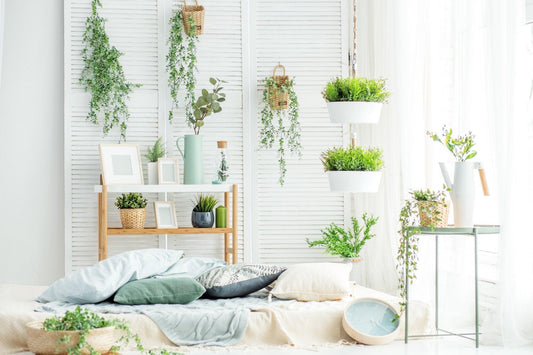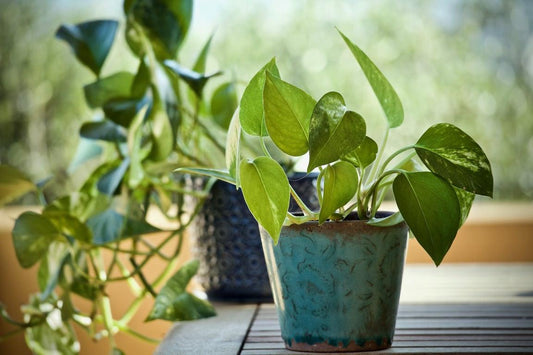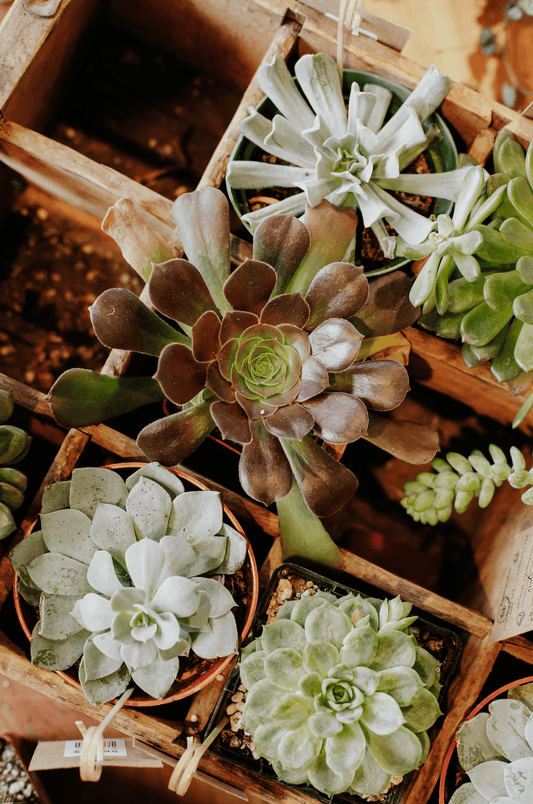CEROPEGII
How to Care for the CEROPEGII Plant
Overview
Ceropegia is a genus of flowering plants that belongs to the family Apocynaceae. The genus includes over 180 species of trailing, twining or erect plants that are native to tropical and subtropical regions of Africa, Asia, and Australia. Some species have unique and fascinating flowers that can resemble a parachute, a bulb, or a small animal, which has earned them the nickname "string of hearts" or "chain of hearts." The foliage of ceropegias is typically small and green, allowing their flowers to take center stage. These plants are easy to grow and propagate, making them popular among indoor and outdoor gardeners. Ceropegias require moderate to bright, indirect light and a well-draining soil mix. They are drought-tolerant, so it's best to let the soil dry out completely before watering. When in bloom, ceropegias attract a wide range of pollinators, such as butterflies and bees.


Profile
Propagation is relatively easy with Ceropegia plants. Stem cuttings can be taken at any time during the growing season and rooted in water or potting mix. It's recommended to take stem cuttings in spring or early summer for best results. When rooting in water, change the water weekly to prevent the growth of bacteria. Ceropegia plants are low-maintenance and don't require frequent pruning, although occasional pruning to remove dead or yellow leaves can help the plant's overall appearance. Unlike Hypoestes, Ceropegia is not known for producing flowers often. If the plant does produce flowers, they are typically small and may not be very showy. Ceropegia plants are non-toxic to both humans and pets, making them a great addition to any home.




Bright Light
Ceropegia plants thrive in bright, indirect light, making them perfect for indoor environments. They prefer to be placed near a window with filtered sunlight, but avoid direct sunlight as it can scorch their leaves. In lower light conditions, Ceropegia will grow more slowly and their foliage may become less vibrant. When planted outdoors, it's best to choose a spot with some shade to protect them from the sun's direct rays. Ceropegia plants prefer higher humidity levels and temperatures between 65-80°F, so make sure to keep them in a warm and humid environment. During the winter months, it's important to avoid placing them near drafts or direct airflow from heaters as they are averse to cold temperatures.

Drought Tolerant
Ceropegia plants prefer to grow in a well-draining, nutrient-rich soil mix. Allow the top 10% of the soil to dry out before watering thoroughly with rainwater or filtered water. Overwatering can lead to root rot and other issues, so it's important to ensure proper drainage. Avoid using tap water with high levels of chlorine or fluoride, as they can be harmful to the plant. During the growing season, feed the plant with a balanced liquid fertilizer once a month. As with most plants, avoid letting the plant sit in standing water, as this can cause root rot. During the winter months, it's best to reduce watering and allow the soil to dry out more thoroughly between waterings.

Intermediate

Pet friendly
FREQUENTLY ASKED QUESTIONS (FAQs)
on CEROPEGII
How can I make my Ceropegii plant more full?
To make your Ceropegia plant more full, you can encourage branching by pinching or cutting back the stems. Use sharp, clean pruning shears to remove the top growth of the plant or pinch back the stem tips. This will stimulate the plant to produce new growth from the nodes below the cut or pinch point, resulting in a fuller, bushier plant. Additionally, make sure to provide adequate light, humidity, and nutrients to promote healthy growth. Proper fertilization with a balanced, water-soluble fertilizer can also encourage bushy growth. Finally, consider propagating your plant by taking stem cuttings and rooting them in water or well-draining soil. This can help you create more plants to add to your collection or to fill out your existing plant.



